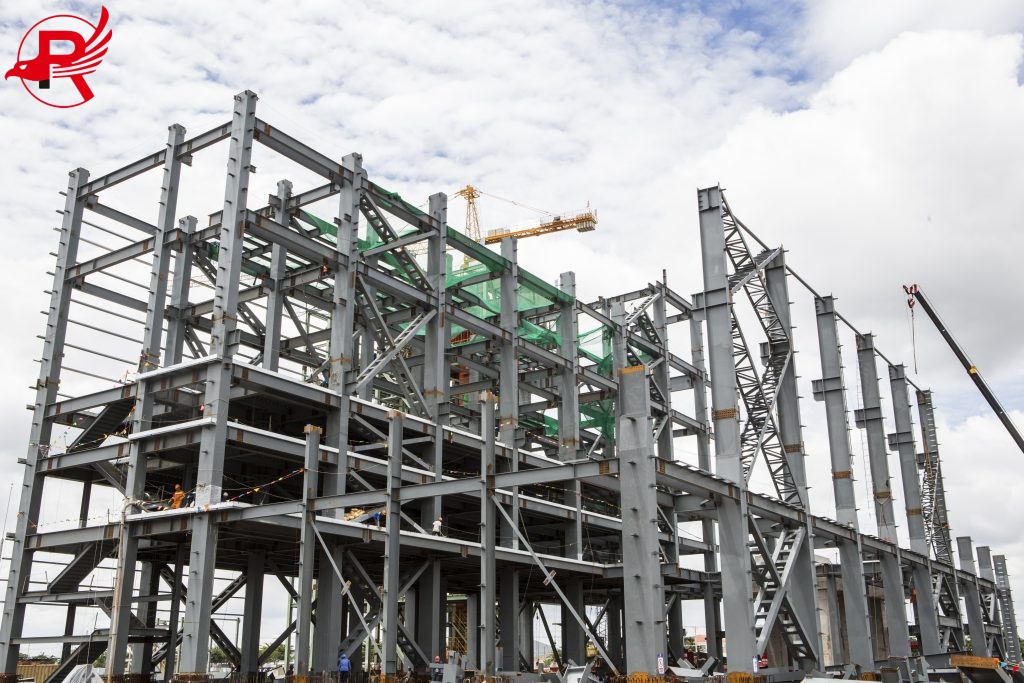Efficient construction of steel structures requires not only careful planning but also practical on-site strategies to ensure safety, quality, and timely completion. Key insights include:
Prefabrication and Modular Assembly: Steel components are prefabricated in controlled factory environments to reduce errors in the field, minimize weather delays, and facilitate fast-track installation. For instance, ROYAL STEEL GROUP has just completed a 80,000㎡ steel structure project in Saudi using fully prefabricated modules bringing the delivery ahead of schedule.
Precision in Lifting and Placement: Heavy steel beams and columns have to be placed to the exact inch. The use of crane with laser-guided system for precision alignment, minimizes structural stress and enhances safety.
Welding and Bolting Quality Control: Continuous monitoring of the joints, the bolt tightening and the coating leads to long-lasting structural integrity. Advanced non-destructive testing (NDT) techniques, including ultrasonic and magnetic particle testing, are increasingly being applied to critical connections.
Safety Management Practices: Site safety procedures, such as harness systems, temporary bracing, worker training, are necessary to ensure no mishaps during assembly at heights. Coordination of all trades (mechanical, electrical, and structural) minimizes interference and ensures a consistent flow of work.
Adaptability and On-Site Problem Solving: Steel structures allow modifications during construction without compromising integrity. Adjustments in column placement, roof slopes, or cladding panels can be made based on site conditions, ensuring projects remain flexible and efficient.
Integration with BIM and Project Management Tools: Real-time monitoring of project progress using Building Information Modeling (BIM) enables instant visualization of construction sequences, clash detection, and resource management, ensuring deadlines are met and material waste is minimized.
Environmental and Sustainability Practices: Recycling of steel off-cuts, efficient coating applications, and optimized material use not only reduce costs but also enhance the project’s environmental footprint.



